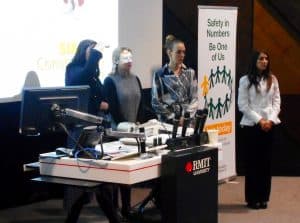In all of the discussion about the new industrial manslaughter laws in Queensland, the topic of directors and officers liability insurance has been overlooked. As mentioned in an earlier article
“….the Queensland Government has promised to ban insurance products that pay occupational health and safety (OHS) penalties imposed against employers.”

 On 30 October 2017, the Safety Institute of Australia and RMIT University held their annual
On 30 October 2017, the Safety Institute of Australia and RMIT University held their annual  A lot of safety professionals “froth up” about aviation safety. Challenging occupational health and safety (OHS) concepts have originated in this sector so it is worth keeping an eye on aviation safety research. A new article has been published called “
A lot of safety professionals “froth up” about aviation safety. Challenging occupational health and safety (OHS) concepts have originated in this sector so it is worth keeping an eye on aviation safety research. A new article has been published called “ On 15 August 2017, the Australian Financial Review (AFR) ran
On 15 August 2017, the Australian Financial Review (AFR) ran  The political debate about the dysfunctional
The political debate about the dysfunctional  Industrial manslaughter laws passed through the Queensland Parliament on October 12 2017. The debate about the laws on that day is an interesting read as it illustrates some of the thoughts about workplace safety in the minds of policy decision makers, business owners, industry associations, trade unions and safety advocates.
Industrial manslaughter laws passed through the Queensland Parliament on October 12 2017. The debate about the laws on that day is an interesting read as it illustrates some of the thoughts about workplace safety in the minds of policy decision makers, business owners, industry associations, trade unions and safety advocates. The Queensland Government is in the middle of a debate in Parliament and the media about the introduction of
The Queensland Government is in the middle of a debate in Parliament and the media about the introduction of